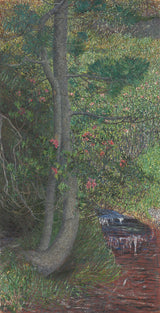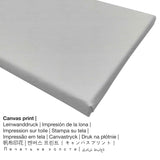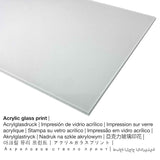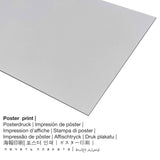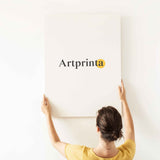Giovanni Segantini, 1897 - Osisi Pine - mbipụta nka mara mma
Ụtụ gụnyere. Mbupu gbakọrọ na ndenye ọpụpụ.
N'afọ 1897 Italian artist Giovanni Segantini made the post-impressionist work of art. The original was painted with the size: Framed: 149,5 x 84,8 x 4,1 cm (58 7/8 x 33 3/8 x 1 5/8 in); Unframed: 135,2 x 72 cm (53 1/4 x 28 3/8 in) and was produced with the medium oil on fabric. Besides, the piece of art forms part of the digital collection of Velọ ihe ngosi nka nke Cleveland, nke dị na Cleveland, Ohio, United States nke America. The nkà nke oge a ngalaba ọha artpiece na-nyere na n'ikike nke Velọ ihe ngosi nka nke Cleveland. The creditline of the artwork is: Mr. and Mrs. William H. Marlatt Fund. On top of that, alignment of the digital reproduction is Eserese ma nwee akụkụ nke 1: 2, nke pụtara na ogologo bụ 50% mkpụmkpụ karịa obosara. The painter Giovanni Segantini was a European artist from Italy, whose artistic style was mainly Post-Impressionism. The Italian artist was born in the year 1858 in Arco, Trento province, Trentino-Alto Adige, Italy and deceased at the age of 41 N'afọ 1899 na Pontresina, Graubunden, Switzerland.
Họrọ ihe ị ga-ekwu
In the product dropdown lists you can choose your favorite size and material. You can select your preferred material and size among the following options:
- Mbipụta iko acrylic (nke nwere ezigbo mkpuchi iko): The print on acrylic glass, which is sometimes denoted as a an art print on plexiglass, will transform your favorite original artwork into marvellous home décor. In addition, it makes a distinct alternative to canvas or dibond fine art replicas. Your artwork will be made with the help of modern UV direct print machines.
- Mbipụta kwaaji: The canvas print is a printed canvas mounted on a wood stretcher. A canvas creates a sculptural effect of three dimensionality. Hanging a canvas print: Canvas Prints have the advantage of being low in weight, meaning that it is quite simple to hang up your Canvas print without any wall-mounts. Hence, canvas prints are suitable for any type of wall.
- Akwụkwọ mmado na ihe kwaaji: A poster print is a printed sheet of flat cotton canvas paper with a granular surface structure. Please bear in mind, that depending on the absolute size of the canvas poster print we add a white margin between 2 - 6cm around the print motif, which facilitates the framing with your custom frame.
- Mbipụta nke aluminom: Aluminium Dibond prints are prints on metal with an impressive depth effect - for a modern look and non-reflective surface. For the Direct Aluminium Dibond print, we print your chosen artwork on the aluminium composite white-primed surface. The UV print on aluminium is the most popular entry-level product and is a truly contemporary way to showcase art reproductions, since it puts the viewer’s attention on the image.
Nkwupụta iwu: We try everything in order to depict our art products as accurate as possible and to demonstrate them visually in our shop. Although, the tone of the printing material, as well as the imprint may differ somehwat from the presentation on your monitor. Depending on your screen settings and the condition of the surface, not all colors can be printed 100% realistically. Bearing in mind that all art reproductions are printed and processed manually, there might also be slight discrepancies in the size and exact position of the motif.
Banyere akụkọ
| Ụdị edemede: | nka nka |
| Mmeputakwa: | dijitalụ mmeputakwa |
| Production usoro: | Mbipụta UV ozugbo (mbipụta dijitalụ) |
| Mmalite ngwaahịa: | Germany |
| Ụdị ngwaahịa: | na mmepụta ihe |
| Eji ngwaahịa a chọrọ: | ihe ndozi mgbidi, gallery mmeputakwa nka |
| Nhazi nke ihe nka: | usoro eserese |
| Njikwa oyiyi: | 1: 2 - ( Ogologo: obosara) |
| Akụkụ akụkụ pụtara: | ogologo bụ 50% mkpụmkpụ karịa obosara |
| Nhọrọ ihe onwunwe: | akwụkwọ mmado (akwụkwọ kwaaji), mbipụta ọla (aluminium dibond), mbipụta kanvas, mbipụta iko acrylic (nwere ezigbo mkpuchi iko) |
| Nhọrọ nke Canvas Mbipụta (akwa akwa na etiti ihe ndọtị): | 20x40cm - 8x16 ", 30x60cm - 12x24", 40x80cm - 16x31", 50x100cm - 20x39", 60x120cm - 24x47", 80x160cm - 31x63", 90-x180cm |
| Mbipụta iko acrylic (nwere ezigbo mkpuchi iko) dị iche iche: | 20x40cm - 8x16", 30x60cm - 12x24", 40x80cm - 16x31", 50x100cm - 20x39", 60x120cm - 24x47" |
| Mpempe akwụkwọ mmado (akwụkwọ kwaaji) nha: | 30x60cm - 12x24", 40x80cm - 16x31", 50x100cm - 20x39", 60x120cm - 24x47" |
| Nhọrọ nha nke mbipụta aluminom (aluminium dibond material) | 20x40cm - 8x16", 30x60cm - 12x24", 40x80cm - 16x31", 50x100cm - 20x39", 60x120cm - 24x47" |
| Igwe onyonyo: | adịghị |
Nkọwa nka ahaziri
| Aha nka: | "Pine Tree" |
| nhazi ọkwa: | sere |
| Category: | nkà nke oge a |
| Narị afọ nka: | 19th narị afọ |
| Afọ nka: | 1897 |
| Afọ nka: | 120 afọ |
| Usoro izizi: | mmanụ na akwa ákwà |
| Akụkụ nke ihe osise izizi: | Nhazi: 149,5 x 84,8 x 4,1 cm (58 7/8 x 33 3/8 x 1 5/8 na); Edebereghị: 135,2 x 72 cm (53 1/4 x 28 3/8 na) |
| Ụlọ ihe ngosi nka: | Velọ ihe ngosi nka nke Cleveland |
| Ebe ebe ngosi nka: | Cleveland, Ohio, United States nke America |
| E Nwere na: | Velọ ihe ngosi nka nke Cleveland |
| Licensedị ikike: | ngalaba ọha |
| Site n'aka: | Velọ ihe ngosi nka nke Cleveland |
| kreditline ọrụ nka: | Maazị na Oriakụ William H. Marlatt Fund |
Nchịkọta ihe nkiri
| Aha onye nka: | Giovanni Segantini |
| Aliases: | Segantini Giovanni, giov. segantini, Segantini, Segatini Giovanni Battista Emanuele Maria, segantini giovanni, g. segantini, Giovanni Segantini, Segantini G. |
| okike nke onye nka: | nwoke |
| Obodo onye nka: | Italian |
| Ọrụ onye na-ese ihe: | onye na-ese ihe |
| Country: | Italy |
| Nhazi nke onye nka: | omenkà nke oge a |
| Ụdị nka: | Mmetụta post-impression |
| Afọ ọnwụ: | 41 afọ |
| Amụrụ n'afọ: | 1858 |
| Obodo ọmụmụ: | Arco, mpaghara Trento, Trentino-Alto Adige, Italy |
| Nwuru: | 1899 |
| Nwuru na (ebe): | Pontresina, Graubunden, Switzerland |
© Nwebiisinka nke | www.artprinta.com (Artprinta)
Artwork description by The Cleveland Museum of Art website (© - site na Cleveland Museum of Art - www.clevelandart.org)
Segantini painted this picture in the Swiss Alps, where he lived from 1886 to 1899. The composition is a study for an unrealized painting of Adam and Eve in paradise. Segantini’s distinctive technique is characterized by brilliant colors applied in small strokes to create an unusually vibrant surface. The artist may have intended that the bent, twisted tree, struggling for survival against alpine storms, is a metaphor for human perseverance.

